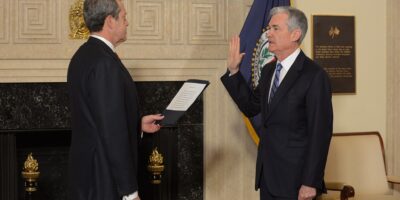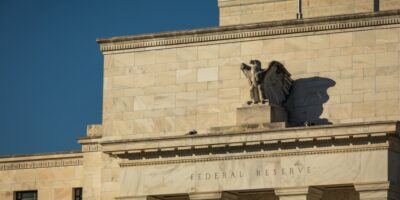When Should the Federal Reserve Have Moved on Inflation?

I have been pretty hard on Fed officials over the last several months. As I recently wrote at National Review:
The Fed was slow to acknowledge the inflation problem — and then slow to act. It has made modest moves so far, it is not seriously considering a more aggressive approach should its current actions fall short, and it does not intend to bring prices back down to a level consistent with a 2 percent growth path, as its average-inflation target would seem to require.
Inflation is too high. And the Fed has seemed unwilling to do what is required to achieve price stability.
Last month, I joined Caleb Brown on the Cato Daily Podcast. We discussed how inflation—and our understanding of inflation—evolved over the last year, when the Fed should have moved on inflation, and how much grace the Fed deserves when we evaluate its monumental miss. Enjoy!
___
TRANSCRIPT
Caleb Brown: This is the Cato Daily Podcast for Saturday, April 23rd, 2022. I’m Caleb Brown. How much grace is due to the Federal Reserve officials in their movements to contain the scourge of inflation? Will Luther is a professor of economics at Florida Atlantic University. We spoke earlier this month in Las Vegas.
As it became clear that inflation was taking hold and would be with us for longer than a short time period, I watched a lot of Bloomberg and the debate over what transitory means came to dominate a lot of the conversations and a lot of the hosts on Bloomberg were unfortunately having to ask their guests now when you say transitory, what do you mean? And then the word episodic came into the conversation. They said, “But all this is an episode of inflation that we’re having right now.”
When do you feel it was beyond dispute that the inflation that the United States was facing was going to be with us for a while?
William Luther: Well, beyond dispute? Certainly by the end of November, the very end of November, when Chair Powell says we’re no longer going to use the word transitory. That seems to me a point after which no one—absolutely no one—can think that this was going to be transitory.
You know, I will confess that in January of 2021 I wasn’t worried about inflation. We had just experienced a pretty big negative real shock and that should push prices up. And there was no reason to think that that was a real shock, which was because we had a pandemic and the government shutdown of production in some sections for a couple months there. There was no reason to think that that was going to last forever and so the increased prices shouldn’t last forever, either. Going through the spring as prices continued to rise, it was really only around May that it was clear that prices had exceeded the 2 percent trajectory plotted from January 2020, just prior to the pandemic. And, even then, I thought: well, inflation is not that high, that we should have some inflation. By July, very clear at that point that we have gone well past just catching up to that 2 percent trajectory. And by September it’s pretty clear to me—or, was pretty clear to me—that not only had inflation exceeded the 2 percent trajectory, but it wasn’t possible to explain the inflation that we are realizing as merely being a product of supply constraints. It was a monetary policy problem.
CB: How do you evaluate the Fed’s response and the timeliness of it?
WL: I think that the technical term is terrible. Again, it’s pretty clear by September that nominal spending is picking up and we’re not just looking at a real supply constraints issue. But the Fed really didn’t acknowledge that that was what was happening until the very end of November. And, even then, it didn’t really do anything about that. It started talking about plotting a course to correct with an eventual rate hike in March of 2022. But even then, when it did so, it did so based on some very rosy projections about what was going to happen. So in December of 2021, the Fed made a projection. The members of the Federal Open Market Committee, four times a year, they make a projection, what inflation will be this year or next year or the year after that and so on. And in December they made a projection for 2021. Now at the time, the most recent data for the personal consumption expenditures price index, which is their preferred measure of prices—the most recent data that they had was from October, so they’re really just projecting two months of observations. And they had lived through a month and a half of those two months, right? So they’ve got a lot of information to make this projection, and how much do they project? Well, the median projection was 5.3 percent inflation and the range was 5.3 to 5.5 percent. We later learned that inflation for 2021 was 5.6 percent, so outside the range of what those Fed officials were projecting. And, again, it’s important to remember that this is at the time when they’re devising a strategy to bring inflation back down. And they were radically wrong at that time about how high inflation would be. So they projected for 2022 and—back in December—that inflation would be 2.6 percent for the year. In March they revised that up to 4.3 percent. That’s the median projection. The range is as high as 5.5 percent, so that’s a pretty big change in your projection of inflation. But it’s a change that didn’t go hand in hand with a change in their solution to bring that inflation back down.
CB: How sensitive should the Federal Reserve be to concerns about economic disruptions, employment effects of taking the bull by the horns and trying to really ramp up rates?
WL: Well, we certainly don’t want a Fed that acts erratically. We want the Fed to be signaling to markets well in advance what it’s going to do. And, as it’s revising its projections for inflation, it should also be helping market participants revise their expectations for what the Fed is going to do. What the Fed did was revise its expectations for inflation without changing policy or trying to signal to markets that they should expect tighter policy to come. I think that’s a very dangerous way to conduct policy. It puts you, as a Fed official, in a situation where—well, market participants aren’t dumb. They can see that prices are picking up and if you wait too long to course correct, then market participants are going to ratchet up their expectations of inflation. At that point Fed officials have to decide either to acquiesce to those market expectations and deliver the higher inflation in perpetuity, which means having the costs of higher inflation in perpetuity, or to make it very clear—painfully clear—to market participants that you’re serious about your inflation target and causing a recession to bring inflation back down. It doesn’t have to be that way. If the Fed had instead signaled well in advance that it was committed to, say, an average inflation target of 2 percent and if it was credible about that commitment, then market participants would continue to expect 2 percent inflation and the Fed could deliver 2 percent inflation over the medium term without having to cause a painful contraction to get there.
CB: How much grace does the Federal Reserve deserve, given the unprecedented level of shifting in production and consumption that we saw in 2020?
WL: I think Fed officials deserve a lot of grace in this period. They deserve a lot of grace because there in March and April of 2020, we have an enormous disturbance—a disturbance which was unlike the other disturbances that we’ve seen. This is what economists call a real shock, a decline in productivity. That’s very different from the kind of shock that we saw in 2007, 2008, which is more of a nominal disturbance. So this is a large, unprecedented shock and the Fed stepped up and facilitated fiscal payments to households and businesses; to keep those businesses from going bankrupt for no fault of their own— there’s a pandemic; to keep those households afloat, even if they were to lose their jobs. And, at the time, it wasn’t clear how much needed to be done. But certainly there was a big risk of doing too little. And the Fed officials, along with Congress and the Treasury, erred on the side of doing too much. I think that that is perfectly reasonable. That’s understandable. We shouldn’t fault them for that. The big problem is not that they did too much in March, in April and May of 2020, the problem is that, when it became clear that they had done too much, they didn’t course correct. So, when I talk to my students, I say: imagine I’m driving from my home in South Florida to Ohio, where much of my family lives. If I suddenly realized that I’m in Indiana, I know I’ve gotten off path somewhere and I have to course correct. The sooner you realize that, the easier it is to correct. You don’t have to travel so far. The Fed at this point is in Alberta. Really far off the mark. And they don’t seem very interested in course correcting at all. If you look at their projections over the next few years, they’re currently projecting that inflation is going to be above their 2 percent average inflation target in 2022, 2023, in 2024, and after that, inflation will be back down to 2 percent. Now, if you read the Fed statements, they committed to—in August of 2020, and reaffirmed in January of 2022, that they’re committed to an average inflation target. But if you let inflation run above average for a period of time, and then you merely bring inflation back down to 2 percent, inflation is above 2 percent on average. You cannot deliver 2 percent inflation on average if you never let inflation go below 2 percent when it has previously been above 2 percent. Fed officials have explicitly stated at this point that they have no interest in bringing inflation down below 2 percent, which is effectively an admission that they’re not going to honor their average inflation target.
CB: Will Luther is a professor of economics at Florida Atlantic University. We spoke earlier this month in Las Vegas. Subscribe to and give a rating to the Cato Daily Podcast on your podcast platform of choice, and follow us on Twitter at Cato Podcast.









